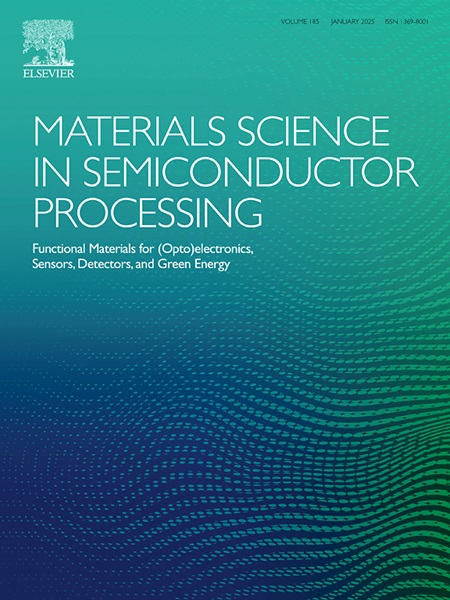Biocompatible reagent-free ZnO nanoparticles with controlled luminescence for anti-counterfeit inks
IF 4.2
3区 工程技术
Q2 ENGINEERING, ELECTRICAL & ELECTRONIC
引用次数: 0
Abstract
ZnO nanoparticles exhibit remarkable versatility due to their broad spectrum of physical and chemical properties, enabling their use in diverse fields ranging from device fabrication to biomedical applications. To harness their luminescent properties, methods such as doping and chemical synthesis are commonly employed. In this study, we present a novel approach for controlled defect engineering in pristine ZnO nanoparticles via the femtosecond laser ablation technique. Enhanced photoluminescence and cathodoluminescence were achieved in nanoparticles with a similar size distribution as the pulse power was increased from 0.25 W to 1.5 W. Raman spectroscopy confirmed a clear signature of increase in oxygen vacancies correlating with increasing ablation power. Additionally, a mechanism is proposed to explain the change in the deep-level emission observed in the photoluminescence and cathodoluminescence spectra, elucidating the effect of electron beam excitation. Specifically, we demonstrated the photoluminescence emission of ZnO nanoparticles on paper, exhibiting fluorescence in the visible range upon excitation within 270–360 nm. The tunable photoluminescence emission of similarly sized nanoparticles under UV light makes them highly suitable for anticounterfeiting applications.
用于防伪油墨的发光可控的无试剂氧化锌纳米颗粒
ZnO纳米颗粒由于其广泛的物理和化学性质而表现出显着的多功能性,使其能够在从器件制造到生物医学应用的各个领域中使用。为了利用其发光特性,通常采用掺杂和化学合成等方法。在这项研究中,我们提出了一种新的方法,通过飞秒激光烧蚀技术来控制ZnO纳米颗粒的缺陷工程。当脉冲功率从0.25 W增加到1.5 W时,具有相似尺寸分布的纳米颗粒的光致发光和阴极发光增强。拉曼光谱证实了氧空位随烧蚀功率增加而增加的明显特征。此外,本文还提出了一种解释在光致发光和阴极致发光光谱中观察到的深能级发射变化的机制,阐明了电子束激发的影响。具体来说,我们在纸上展示了ZnO纳米粒子的光致发光发射,在270-360 nm范围内激发时显示出可见光范围内的荧光。类似大小的纳米颗粒在紫外光下的可调谐光致发光发射使它们非常适合防伪应用。
本文章由计算机程序翻译,如有差异,请以英文原文为准。
求助全文
约1分钟内获得全文
求助全文
来源期刊

Materials Science in Semiconductor Processing
工程技术-材料科学:综合
CiteScore
8.00
自引率
4.90%
发文量
780
审稿时长
42 days
期刊介绍:
Materials Science in Semiconductor Processing provides a unique forum for the discussion of novel processing, applications and theoretical studies of functional materials and devices for (opto)electronics, sensors, detectors, biotechnology and green energy.
Each issue will aim to provide a snapshot of current insights, new achievements, breakthroughs and future trends in such diverse fields as microelectronics, energy conversion and storage, communications, biotechnology, (photo)catalysis, nano- and thin-film technology, hybrid and composite materials, chemical processing, vapor-phase deposition, device fabrication, and modelling, which are the backbone of advanced semiconductor processing and applications.
Coverage will include: advanced lithography for submicron devices; etching and related topics; ion implantation; damage evolution and related issues; plasma and thermal CVD; rapid thermal processing; advanced metallization and interconnect schemes; thin dielectric layers, oxidation; sol-gel processing; chemical bath and (electro)chemical deposition; compound semiconductor processing; new non-oxide materials and their applications; (macro)molecular and hybrid materials; molecular dynamics, ab-initio methods, Monte Carlo, etc.; new materials and processes for discrete and integrated circuits; magnetic materials and spintronics; heterostructures and quantum devices; engineering of the electrical and optical properties of semiconductors; crystal growth mechanisms; reliability, defect density, intrinsic impurities and defects.
 求助内容:
求助内容: 应助结果提醒方式:
应助结果提醒方式:


